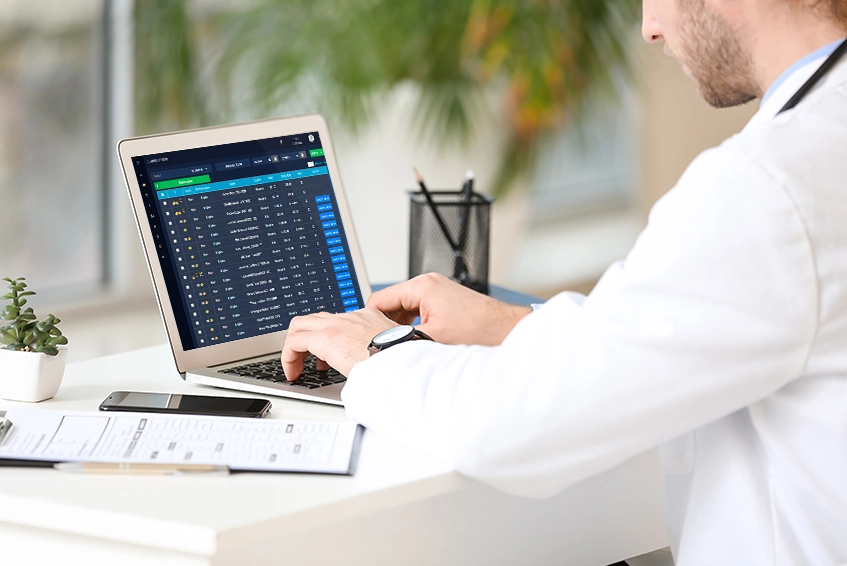
When it comes to medical records and billing, you will encounter many complex terms that may confuse those who don’t work in the industry. Some of the most common terms you will hear or read are EMR and EHR.
What do they mean, and what do they entail? How are they different? Let’s discuss.
EMR vs. EHR: Definition and Implication
EMR stands for electronic medical records while EHR is electronic healthcare records. They seem similar on the surface, and the terms are often used interchangeably, even by healthcare professionals.
However, they mean different things and have different implications when used with medical billing software.
The primary difference between Electronic Health Records (EHR) and Electronic Medical Records (EMR) is their scope and accessibility:
EMR (Electronic Medical Records): These are digital versions of a patient's paper chart within a single practice. EMRs contain the medical and treatment history of patients in one practice and are mostly used by providers for diagnosis and treatment.
EHR (Electronic Health Records): EHRs are more comprehensive and are designed to share information with other healthcare providers and organizations, such as laboratories, specialists, and pharmacies. EHRs contain the patient’s records from multiple doctors and provide a broader view of a patient’s health care.
One thing they have in common is that they are records kept digitally.
What is EMR?
Every patient in a medical or healthcare facility has a chart that doctors and other professionals peruse to understand their medical situation. The EMR is simply an electronic version of that.
Healthcare professionals across the globe have turned to EMR because it is easier to pull up records when stored digitally. And EMR software means that those with access to the system can see real-time changes reflected in the medical records of every patient. This is essential to providing holistic care to patients who need to see various specialists.
For example, a cancer patient interacts with various healthcare professionals. The oncologist is their primary doctor, but they may want their long-time family physician to be involved in the treatment process because of their history. They also work with nutritionists to plan their diet and psychologists to ensure their mental and emotional well-being. Well-maintained electronic medical records help all of these professionals collaborate to deliver the best possible treatment for the patient.
What is EHR?
In contrast, EHR refers to a patient’s or the facility’s comprehensive healthcare journey. EHR’s scope is larger, and EMR is usually a mere component of the whole. It is a comprehensive system that tracks and monitors every patient’s EMR plus billing needs. EHR also includes all the other software tools and components that would aid the healthcare facility in providing the best care to patients.
While it is called a “record,” it is, in fact, an entire system that facilitates inter-department communication to improve operations and healthcare processes as a whole. And some people outside the process may be granted access to some of the most sensitive elements of EHR.
For example, some doctors who do not work in the facility can access EMR and other EHR software features anywhere in the world. It would help them remain accessible for a specific patient’s care.
Takeaway
There is no such thing as EMR vs EHR, as they are not in competition with each other. Instead, medical practitioners and facilities should consider EMR and EHR together, as they are both necessary for seamless workflows and top-notch care.
Benefits of EMRs and EHRs
 Every healthcare organization should use EMRs and phase out patient charts. There are many reasons to make the switch to electronic records:
Every healthcare organization should use EMRs and phase out patient charts. There are many reasons to make the switch to electronic records:
Cost Effective
Many healthcare organizations have made the transition from manual to electronic documentation. Some have yet to do so because EHR and EMR systems are expensive.
The initial investment is high because of the implementation of robust EHR software. However, it won’t be long until you will see how better it is in terms of cost efficiency:
- You don’t need to buy reams of paper, clipboards, pens, printer ink, and other materials for paper records.
- You don’t need the extra space and cabinetry to store paper documents.
- You can limit the workforce maintaining records so more employees can focus on more complex tasks.
Less Fire Hazard
Paper and cardboard boxes for storing large volumes of documents are fire hazards. Not that computers and other electronics won’t catch fire as well, but paper products catch fire more quickly. Eliminating stacks of records is one hazard off the list.
Faster Processing of Insurance Claims
Because all records are stored in the system, it is easier for the healthcare organization to process insurance claims quickly and more accurately. Correctly accomplished insurance claims lead to quicker medical refunds. And the risk of rejections is reduced or even eliminated.
Claims can be submitted electronically, which is much faster than manual submission. Any mistakes can also be detected within the EHR system.
Security
Security is never absolute, but it’s harder to crack software security than it is to pick a lock and steal hard copies of patient files. For this, you need software you can trust to provide top-notch security.
Medical facilities must strictly abide by the Health Insurance Portability and Accountability Act of 1996 (HIPAA), a federal law designed to protect patient health information. No patient information or record can be released without their consent.
ClaimGenix is HIPAA-compliant medical billing insurance software that protects medical data with robust security features.
What to Look for
 One needs the right medical software to enjoy the benefits of electronic records.
One needs the right medical software to enjoy the benefits of electronic records.
What type of software should a healthcare organization look for?
- Flexible
- Easy to use
- Great customer service
- Secure
- Accurate
- Relevant features
Conclusion
Most medical organizations already use EMR and EHR, which is the correct route regarding record organization, accessibility, efficiency, and accuracy. It’s highly convenient as everything you need can be accessed with just a few clicks.
ClaimGenix is a fantastic option, with over 8,000 billable organizations. Get your demo today!

